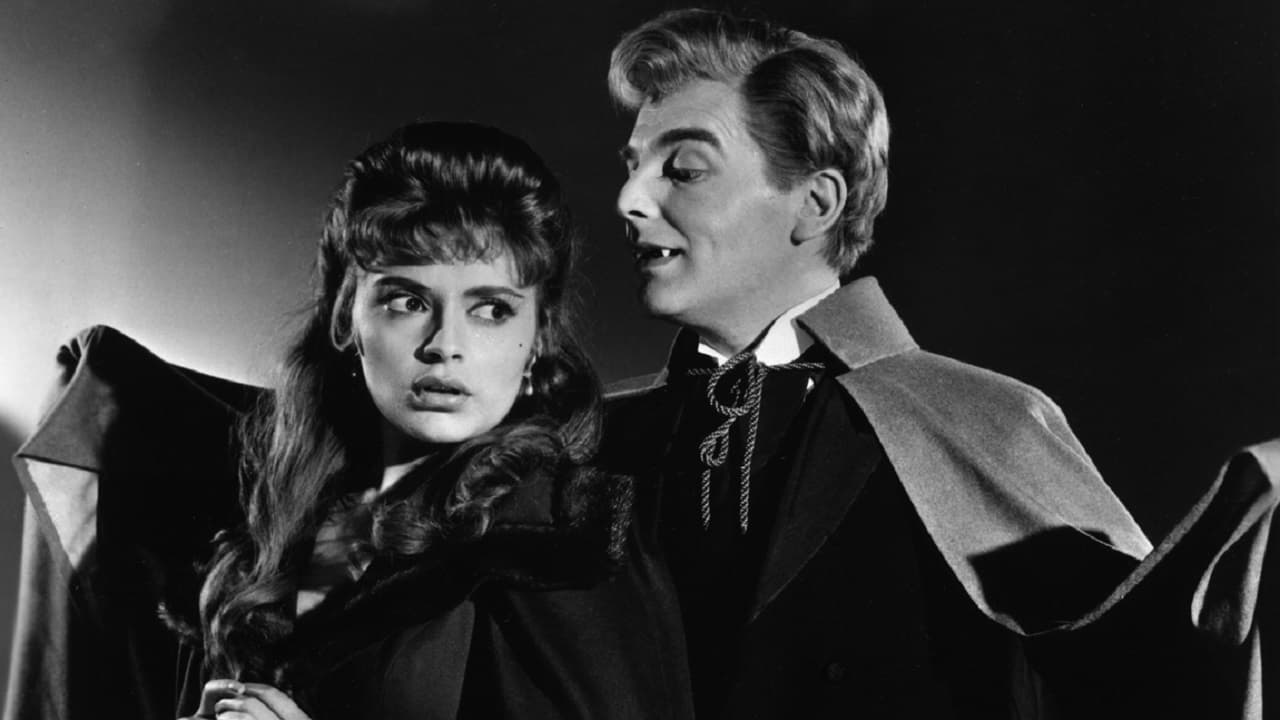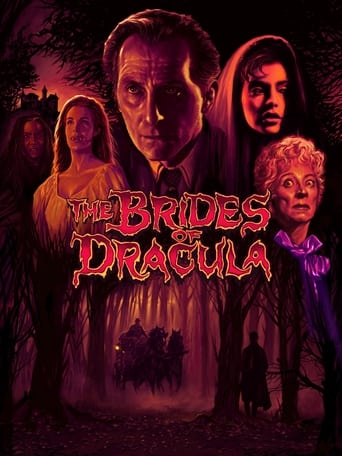

Please don't spend money on this.
... View MoreDreadfully Boring
... View MoreWhile it doesn't offer any answers, it both thrills and makes you think.
... View MoreAmazing worth wacthing. So good. Biased but well made with many good points.
... View MoreSolid Hammer Horror follow-up to their first Dracula picture, "Horror of Dracula." Christopher Lee is sadly absent from this sequel, but Peter Cushing is back as Professor Van Helsing. Instead of fighting Count Dracula, Van Helsing fights Dracula's many "brides" and his disciple Baron Meinster. Directed by Hammer regular Terence Fisher, he brings plenty of spooky atmosphere to the picture, as well as Hammer's usual dose of blood and heaving bosoms. SPOILER ALERT! I did quite enjoy the film's finale where The Count's disciple is killed by the shadow of a windmill that forms a cross, which was a terrific visual and also something of a nice nod to the finale of the original Universal version of "Frankenstein."
... View MoreI had already seen the third film from British Hammer (Horror) Studios, Prince of Darkness, before this second film in the series of sequels, but it doesn't really matter, I was just looking forward to watching it, directed by Terence Fisher (The Curse of Frankenstein, The Hound of the Baskervilles, The Mummy). Basically it continues where Dracula left off, the count, monarch of all vampires, is dead, but his disciples live on to spread terror to victims of Transylvania. Young French schoolteacher Marianne Danielle (Yvonne Monlaur) is heading to a small village to take a teaching position, but she is abandoned by the coach driver at a village inn, locals there are giving her warnings, which she ignores. Out of the blue, Baroness Meinster (Great Expectations' Martita Hunt) invites Marianne to stay the night at her castle, she accepts, the only other person there is her servant Greta (Freda Jackson). However during the night, Marianne sees a man in a balcony, she learns it is the son of the Baroness, the Baron Meinster (David Peel), who has become insane. Later Marianne sees the Baron standing over the balcony, looking like he will jump, she goes to his room and finds he is chained, he claims his mother has imprisoned him. Convinced he is the victim, Marianne decides to help the Baron escape and steals the key to his chains, but this was a trap, he reveals himself to be a vampire, Marianne runs away from the castle in terror, and collapses in the woods. Marianne is found exhausted by Dr. Van Helsing (Peter Cushing), who has been invited to the village by a local priest Father Stepnik, she has no memory of what happened, and is not familiar with vampire terms that Van Helsing tells her, he takes her to the school she is to be employed. Van Helsing visits the young girl he has been called to see, who has died, he recognises she has been bitten by a vampire and requests she is not buried, later Greta visits the coffin and helps her to awaken from the dead as a vampire herself. Meanwhile the Baron turns his mother into a vampire also, biting her neck, Van Helsing realises "vampirism" is spreading in the village, he sees ladies becoming "undead" monsters, with the ability to turn into bats and fly away, so one by one he cures them of this terror, when he gets the opportunity to drive a stake to the heart. Following the deaths of Greta and the Baroness, Van Helsing is left to face Baron Meinster, who has abducted Marianne, a chase ensues and a fire is started at the windmill, where the Baron had been hiding, in the end the Baron is defeated when the windmill sail is positioned to form a gigantic shadow forming a crucifix which goes over the Baron, he dies, Van Helsing comforts Marianne as the mill burns down. Also starring Miles Malleson as Dr. Tobler, Henry Oscar as Herr Lang, Mona Washbourne as Frau Lang, Andree Melly as Gina and Victor Brooks as Hans. Cushing gives a good performance as the man who will thwart all vampires to stop the spread of the "disease", Peel is a dull substitute for Sir Christopher Lee, he did not reprise his role as he worried about being typecast, but he returned for the following film, and many more after, Dracula only appears in the title and is mentioned once. Disciple of Dracula was suggested as an alternative title, this would have made more sense, "brides" don't really come into the story, it has the classic Gothic elements expected, and the atmosphere is fair, I don't know if I fully agree with critics ratings, but it is a good enough horror. Worth watching, in my opinion!
... View MoreThis movie begins with the short explanation that Count Dracula is dead--but his disciples live on. The film then shows a stagecoach being driven extremely fast over a dirt road and eventually coming to a stop at a nearby village where the lone passenger named "Mdm Danielle" is dropped off before the carriage speeds off again. It's at this time that an elderly woman walks into the inn and offers Mdm Danielle a place to stay for the night. She is then driven to a castle on the outskirts of the village. That night she meets a strange man by the name of "Baron Manster" who has been shackled inside a room within the castle and he convinces her to get the key and let him loose. Upon doing that what she doesn't realize is this particular person is no ordinary man--but a vampire who has now been set free to wreck havoc on the nearby countryside. Now rather than reveal any more I will just say that this particular film managed to continue the fine Hammer tradition of establishing a good, solid Gothic setting necessary for a movie of this type. Yet, even though it had a good story and more than adequate performances for the most part, I didn't particularly care for the ending or the selection of David Peel (as "Baron Meinster") for the role of the vampire. He just didn't seem to have the same sinister quality that actors like Bela Lugosi or Christopher Lee manage to convey on screen. But that's just my opinion. In any case, I liked this film in spite of the previously mentioned criticisms and I have rated it accordingly. Slightly above average.
... View MoreThis is a sequel to The horror of Dracula. This movie is great. It is one of the scariest movies ever. It has a great story line. It also has great acting. It also has great special effects. It is very intense. Van H.e.l.s.i.n.g most fight a another vampire in his home country of Holland. This is a true horror classic. If you like scary movie then you need to see this movie. If you do not great scared of this movie then no movie will scary you. So it is old. It does not feel old. This is the movie that will make your flesh crawl. It will make you jump. See this movie. It is a great movie. I need more lines and I am running out of things to say.
... View More